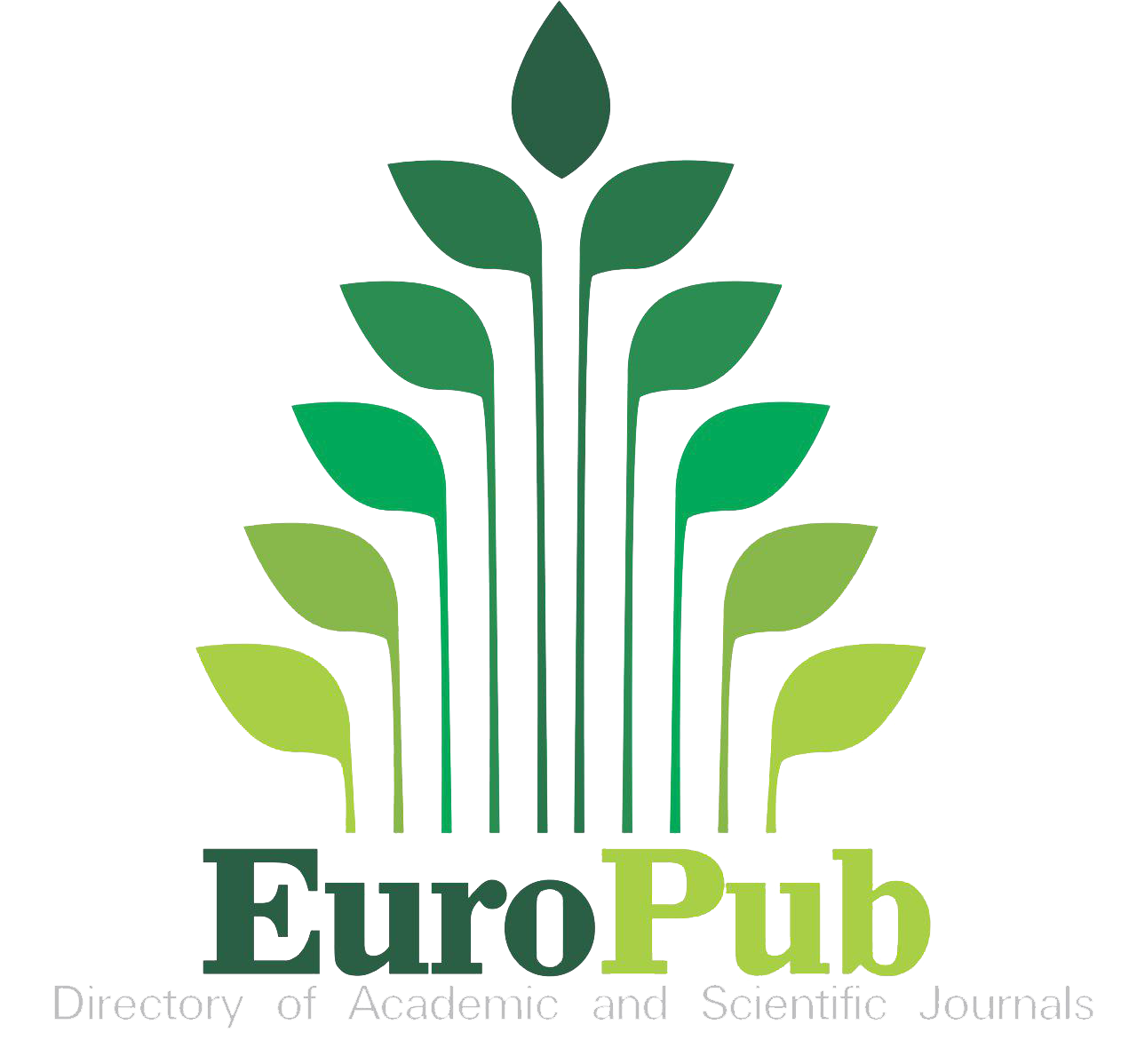Utilization of Micro-lecture Videos in Teaching Selected Microbiology Laboratory Topics
DOI:
https://doi.org/10.54536/ajmri.v4i2.4304Keywords:
Blended-Learning, Culture Media Preparation, Gram Staining, Instructor-Made Micro-Lecture Videos, Supplementary MaterialsAbstract
The sudden shifting of classes to online class set-up is ineluctable in Philippine education today due to many events and adverse environmental conditions. Laboratory courses are most affected by the limited procedural videos that are explicitly developed and target the students of the current generation, particularly microbiology laboratory procedures. Hence, this study utilized developed instructor-made micro-lecture videos (IMMV) of selected microbiology laboratory topics (Culture Media Preparation and Gram Staining) as supplementary materials in a blended-learning asynchronous class set-up. A mixed method-explanatory sequential was used with 54 Medical Biology students through a validated pre-test, post-test, and survey. Through a paired t-test, the pre- and post-test scores of the experimental group revealed significant differences in their scores. Moreover, an independent t-test was used to analyze the post-test scores of the control and experimental groups, which revealed a significant difference in their performance. Students perceived that utilizing IMMV positively affects their academic performance in terms of control over the learning process, knowledge retention, and intrinsic motivation. As such, IMMVs are brief, concise, time-efficient procedures, effective guides for learning, provide sufficient learning, developed with encouraging and motivating content, captivate learners’ attention and interest, create a significant learning impact for students, promote advanced learning efficiency, and provide convenience for student’s learning. This suggests that learning microbiology laboratory topics through micro-lecture befits the needs and learning styles of the generation of learners today sufficiently and effectively.
Downloads
References
Andrews, J., de Los Rios, J., Rayaluru, M., Lee, S., Mai, L., Schusser, A., & Mak, C. (2020). Experimenting with At Home General Chemistry Laboratories During the CoViD-19 Pandemic. Journal of Chemical Education, 97(7), 1887-1894. https://pubs.acs.org/doi/10.1021/acs.jchemed.0c00483
Aquino, J. S. (2022). Development and Utilization of Instructional Video in Teaching Statistics and Probability. International Journal of Research Publications, 103 (1), 675-688. http://doi.org/10.47119/IJRP1001031620223406
Beheshti, M., Taspolat, A., Kaya, O. S., & Sapanca, H. F. (2018). Characteristics of instructional videos. World Journal on Educational Technology: Current Issues, 10(1), 61-69.
Blacer-Bacolod, D. (2022). Student-Generated Videos Using Green Screen Technology in a Biology Class. International Journal of Information and Education Technology, 12(4), 339-345. https://doi:10.18178/ijiet.2022.12.4.1624
Brame, C. J. (2016). Effective educational videos: Principles and guidelines for maximizing student learning from video content. CBE—Life Sciences Education, 15(4), es6 1-6. https://doi.org/10.1187/cbe.16-03-0125
Brockman, R. M., Taylor, J. M., Segars, L. W., Selke, V., & Taylor, T. A. (2020). Student perceptions of online and in-person microbiology laboratory experiences in undergraduate medical education. Medical education online, 25(1), 1710324. https://doi.org/10.1080/10872981.2019.1710324
Campbell, L. O., Heller, S., & Pulse, L. (2020). Student-created video: an active learning approach in online environments. Interactive Learning Environments, 30(6), 1145–1154. https://doi.org/10.1080/10494820.2020.1711777
Carmichael, M., Reid, A-K., & Karpicke, J.D. (2020) Assessing the Impact of Educational Video on the Student Engagement, Critical Thinking, and Learning: The Current State of Play. Sage Publishing, 7-13.
Chauhan, J., Taneja, S., & Goel, A. (2015, October). Enhancing MOOC with augmented reality, adaptive learning and gamification. In 2015 IEEE 3rd International Conference on MOOCs, Innovation and Technology in Education (MITE), 348-353. https://doi:10.1109/MITE.2015.7375343
Chen, H-T. M., & Thomas, M. (2020). Effects of learning video styles on engagement and learning. Education
Technology Research Development, 68, 2147-2164. http://dx.doi.org/10.1007/s11423-020-09757-6
Cheng, C. (2015, November). Thinking on the problems in design and application of micro-lecture. Proceedings of the 2015 International Conference on Economics, Management, Law and Education, 383-386. https://doi.org/10.2991/emle-15.2015.88
Cickovska, E. (2020). Understanding and teaching Gen Z in higher education. Horizons- International Scientific Journal (Series A), 26(3), 275-290. https://doi.org/10.20544/HORIZONS.A.26.3.20.P22
Cilliers, E. J. (2017). The challenge of teaching generation Z. PEOPLE:International Journal of Social Sciences, 3(1), 188-198. https://doi.org/10.20319/pijss.2017.31.188198
Cowan, M. K. (2015). Microbiology: A Systems Approach (4th International Edition). McGraw Hill Higher Education.
Deng, H., Shao, Y., Tang, Y., & Qin, Z. (2014). How micro lecture videos trigger the motivation of learners of Coursera: A comparative study based on ARCS mode. 2014 International Conference of Educational Innovation through Technology, 117-122. https://doi.10.1109/EITT.2014.28
Fauzi, A., Rosyida, A., Rohma, M., & Khoiroh, D. (2021). The difficulty index of biology topics in Indonesian Senior High School: Biology undergraduate students’ perspectives. Jurnal Pendidikan Biologi Indonesia (JPBI), 7(2), 149-158. https://doi.10.22219/jpbi.v7i2.16538
Flemming, H. C., & Wuertz, S. (2019) Bacteria and archaea on Earth and their abundance in biofilms. Nature Reviews Microbiology, 17(4), 247–260. https://doi.org/10.1038/s41579-019-0158-9
Francisco, Jr. L. M., & Prudente, M. S. (2022). Improving Student’s Conceptual Knowledge In Online Distance Learning Through The Use Of Micro-Lectures: A Photosynthesis Example. Innovative Technology and Management Journal, 5(1), 11-21.
Giannakos, M. N., Krogstie, J., & Aalberg, T. (2016). Video-based learning ecosystem to support active learning: application to an introductory computer science course. Smart Learning Environments, 3(1), 1-13. https://doi.org/10.1186/s40561-016-0036-0
Guo, P., Kim, J., & Rubin, R. (2014). How Video Production Affects Student Engagement: An Empirical Study of MOOC Videos. Proceedings of the first ACM conference on learning @ scale conference. Association for Computing Machinery, New York, NY, USA, 41-50. https://doi.10.1145/2556325.2566239
Hadiprayitno, G., Muhlis, & Kusmiyati. (2019). Problems in learning biology for senior high schools in Lombok Island. In Journal of Physics: Conference Series, 1241 (1). https://doi.10.1088/1742-6596/1241/1/012054
Ikhsanudin, I., & Subali, B. (2018). Content validity analysis of first semester formative test on biology subject for senior high school. Journal of Physics. Conference Series, 1097, 012039. https://doi.org/10.1088/1742-6596/1097/1/012039
Joji, R. M., Kumar, A. P., Almarabheh, A., Dar, F. K., Deifalla, A. H., Tayem, Y., ... & Shahid, M. (2022). Perception of online and face to face microbiology laboratory sessions among medical students and faculty at Arabian Gulf University: a mixed method study. BMC Medical Education, 22(1), 1-12.
Kareem, A. A. (2018). The use of multimedia in teaching biology and its impact on students’ learning outcomes. The Eurasia Proceedings of Educational and Social Sciences, 9, 157-165.
Lacey, K., & Wall, J. G. (2021). Video-based learning to enhance teaching of practical microbiology. FEMS Microbiology Letters, 368(2), 1-10. https://doi.org/10.1093/femsle/fnaa203
Lapitan Jr, L. D., Tiangco, C. E., Sumalinog, D. A. G., Sabarillo, N. S., & Diaz, J. M. (2021). An effective blended online teaching and learning strategy during the COVID-19 pandemic. Education for Chemical Engineers, 35, 116-131. https://doi.org/10.1016/j.ece.2021.01.012
Lestari, L., & Putri, D. H. (2020). An Analysis of Factors Causing Learning Difficulties of Biology Students in the Microbiology Subject, Universitas Negeri Padang. International Conference on Biology, Sciences and Education (ICoBioSE 2019), 253-258. https://doi.org/10.2991/absr.k.200807.051
Linhao, S. (2018). Design of Micro-lecture for College Chemistry Majors and Prospect of Its Teaching Application. Proceedings of the 2018 3rd International Conference on Education, E-learning and Management Technology (EEMT 2018), 646-650. https://doi.org/10.2991/iceemt-18.2018.126
Loughlin, W. A., & Cresswell, S. L. (2021). Integration of Interactive Laboratory Videos into Teaching Upper-Undergraduate Chemical Laboratory Techniques. Journal of Chemical Education, 98(9), 2870-2880. https://doi.org/10.1021/acs.jchemed.0c01493
Magayanes, R. L. S., Sarmiento, B. G., Miguel, J. R. P., Diaz, J. J. G., Argañosa, J. B., Brillantes, L. C., Luyahan, J. T., Barachina, J. M. D., & Oca, M. D. D. (2023). Utilization of Student-Created Videos for Laboratory Activities in Physics. American Journal of Education and Technology, 4(2), 116-123. https://doi.org/10.54536/ajet.v2i2.1561
Makransky G., Thisgaard M. W,. Gadegaard, H. (2016). Virtual Simulations as Preparation for Lab Exercises: Assessing Learning of Key Laboratory Skills in Microbiology and Improvement of Essential Non-Cognitive Skills. PLoS ONE, 11(6). https://doi.org/10.1371/journal.pone.01558955
Mamman, S. M., Misau, A. A., & Agboola, M. (2018). Pedagogical Approaches and Effective Teaching in Biology Education: A Review of Teacher’s Roles and Responsibilities. ATBU, Journal of Science, Technology, & Education, 6(4), 277-283.
Manap, A., Sardan, N., & Rias, R. (2013). Interactive Learning Application in Microbiology: The Design. Procedia-Social and Behavioral Sciences, 90, 31-40. https://doi.org/10.1016/j.sbspro.2013.07.062
Mayer, R. E., Fiorella, L., & Stull, A. (2020) Five ways to increase the effectiveness of instructional video. Association for Educational Communications and Technology, 68, 837-852. https://doi.org/10.1007/s11423-020-09749-6
Nabayra, J. (2022). YouTube-based teacher-created videos for online mathematics learning during the pandemic and its effect to students’ mathematics performance. Webology, 19(2), 1380- 1390.
Palac, N. C. J. C., Baldo, K. J. C, Socorro, N. M. G., & Berame, J. S. (2024). Determining the Intermediate Grade Pupils’ Perceived Learning Difficulties in Science Class Experiences. American Journal of Education and Technology, 4(1), 1-11. https://doi.org/10.54536/ajet.v4i1.3886
Rashtchi, M., Khoshnevisan, B., & Shirvani, M. (2021). Integration of Audiovisual Input via TED-ED Videos and Language Skills to Enhance Vocabulary Learning. MEXTESOL Journal, 45(1), 1-18. http://dx.doi.org/10.61871/mj.v45n1-12
Rebong, M. (2022). Micro-Lecture Teaching To Improve The Learning Of Junior High School Learners In Science. International Journal of Research Publications, 102(1), 902-911. https://doi.org/10.47119/IJRP1001021620223333
Riedl, A., Yeung, F., & Burke, T. (2021). Implementation of a Flipped Active-Learning Approach in a Community College General Biology Course Improves Student Performance in Subsequent Biology Courses and Increases Graduation Rate. CBE—Life Sciences Education, 20(2), ar30. https://doi.org/10.1187/cbe.20-07-0156
Robles, A. C. M. O., & Acedo, E. M. (2019). Development and Validation of Educational Video Tutorials for 21st Century Secondary Learners. Asian Journal of Multidisciplinary Studies, 2(2), 42-49.
Scholtenhuis, L., Vahdatikhaki, F., & Rouwenhorst, C. (2020). Flipped Microlecture Classes: Satisfied Learners and Higher Performance. European Journal of Engineering Education, 46(3), 457-458. https://doi.org/10.1080/03043797.2020.1819961
Shuping, L., Taotang, L., & Jie, Z. (2019). Research on Application of Microlecture to Teaching Reform. In IOP Conference Series: Materials Science and Engineering, 563(4). https://doi:10.1088/1757-899X/563/4/042029
Supriadi, F., Agreindra Helmiawan, M., Yan Sofiyan, Y., & Guntara, A. (2020). A Model of Virtual Learning Environments Using Micro-Lecture, MOODLE, and SLOODLE. 8th International Conference on Cyber and IT Service Management (CITSM), Pangkal, Indonesia, 1-4. https://doi:10.1109/CITSM50537.2020.926875
Thornton, S., Riley, C., & Wiltrout, M. E. (2017). Criteria for video engagement in a biology MOOC. In Proceedings of the Fourth (2017) ACM Conference on Learning @ Scale, 291-294. https://doi.org/10.1145/3051457.3054007
Tianjiao, L. (2020). Design and Application of Micro-lecture in Personalized Teaching of Computer Network. Journal of Physics: Conference Session, 2-3. https://doi:10.1088/1742-6569/1678/1/012108
Wang, H. Y., Zhang, F. B., Delidaer, K., Cheng, F., Zhao, Y. J., & Ding, J. B (2019). Using a Variety of Modern Teaching Methods to Improve the Effect of Medical Microbiology Teaching. Procedia Computer Science, 154, 617-621. https://doi.org/10.1016/j.procs.2019.06.097
Winch, J. K., & Cahn, E. S. (2015). Improving student performance in a management science course with supplemental tutorial videos. Journal of Education for Business, 90(7), 402-409. https://doi.org/10.1080/08832323.2015.1081865
Yang, Y., Zhang, X., & Tian, D. (2016). Analysis on Micro-lecture Design in Modern Distance Education. In 2016 2nd International Conference on Economics, Management Engineering and Education Technology, 87, 380-383. https://doi.10.2991/icemeet-16.2017.79
Zheng, H. (2022, February 17). Short and Sweet: The Educational Benefits of Microlectures and Active Learning. The Voice of the Higher Education Technnology Community Educause Review. https://er.educause.edu/articles/2022/2/short-and-sweet-the-educational-benefits-of-microlectures-and-active-learning.
Downloads
Published
How to Cite
Issue
Section
License
Copyright (c) 2025 Monica Joyce S. Sespeñe

This work is licensed under a Creative Commons Attribution 4.0 International License.







